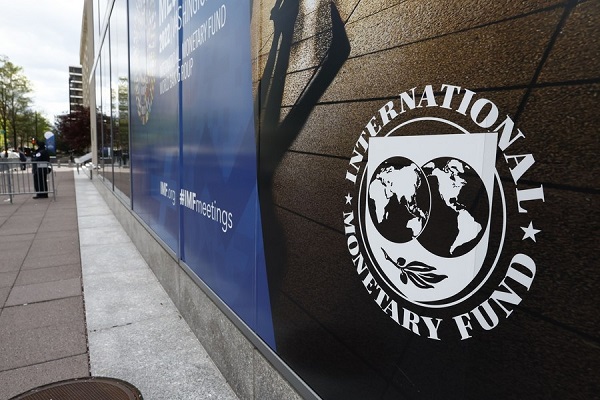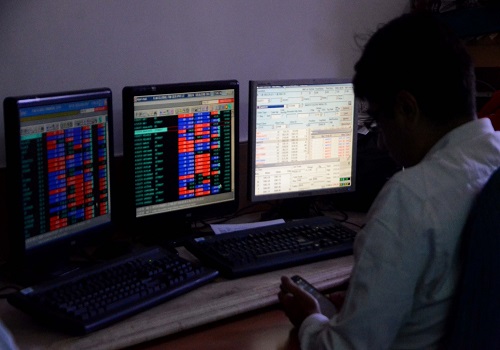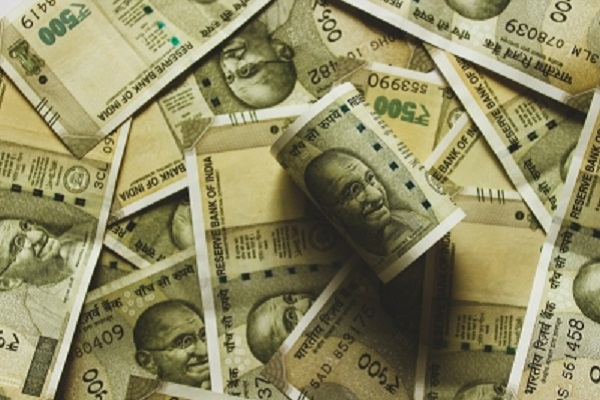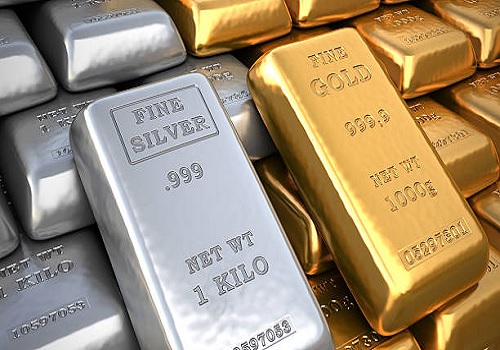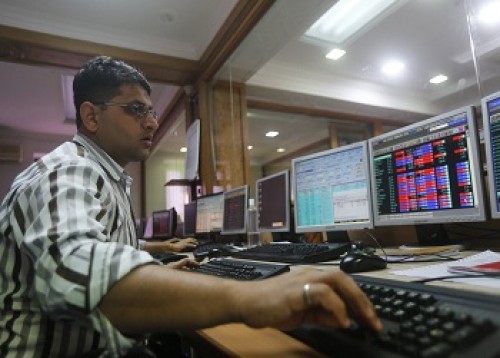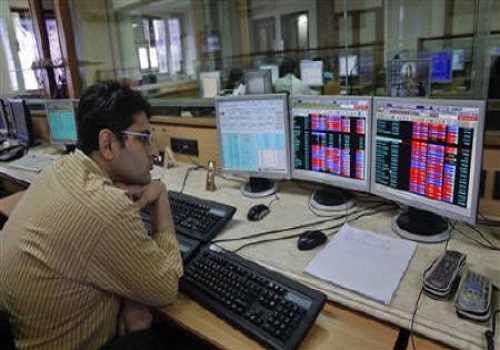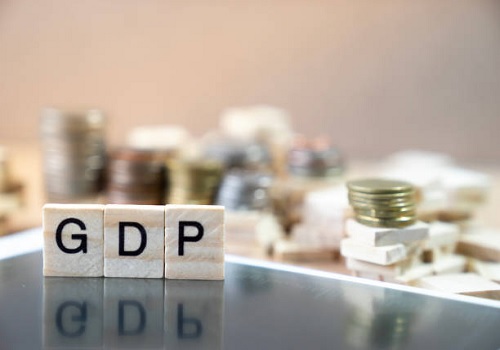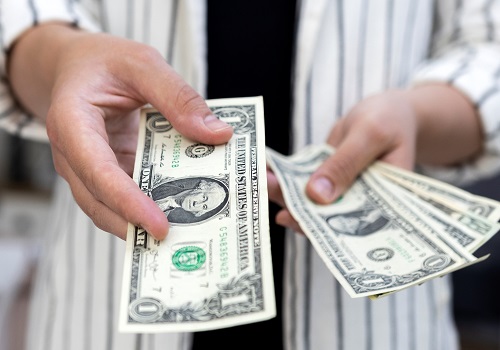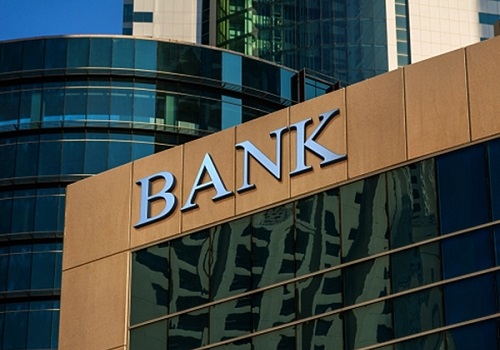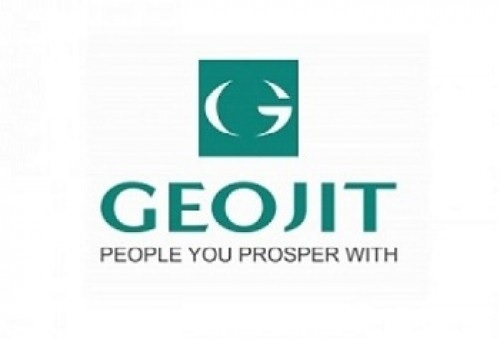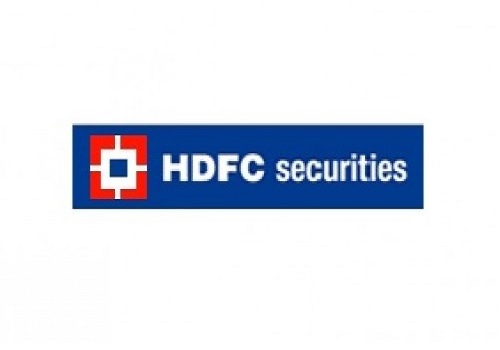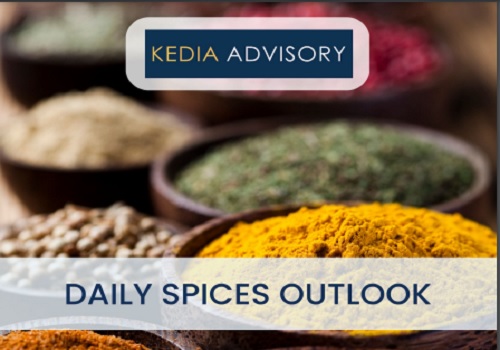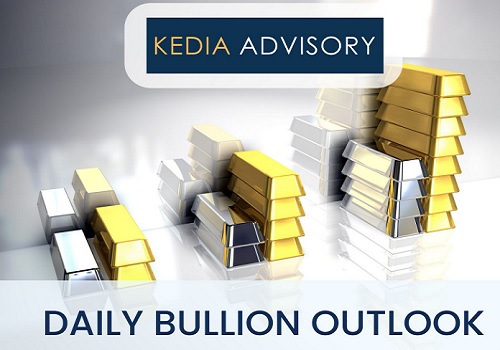Zinc trading range for the day is 290.9-299.1 - Kedia Advisory
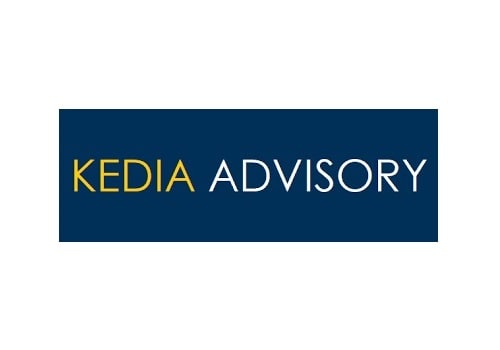
Gold
Gold prices surged 1.73% to settle at 1,23,209 per 10 grams, hitting a fresh all-time high as heightened economic and geopolitical uncertainties, coupled with expectations of further U.S. Federal Reserve rate cuts, fueled strong safe-haven demand. Investor sentiment was bolstered after Goldman Sachs raised its December 2026 gold price forecast to $4,900 per ounce from $4,300, citing robust ETF inflows and continued central bank diversification into gold. The ongoing U.S. government shutdown has delayed major economic data releases, adding to uncertainty and strengthening gold’s appeal. In India, physically backed gold ETFs witnessed record inflows in September, with assets under management rising to an all-time high of $10 billion. Gold ETF holdings climbed by 7.3 tons in a month, reaching 77.3 tons, as investors sought stability amid weak equity market returns. So far in 2025, inflows have touched $2.18 billion, surpassing previous annual records. Despite record-high domestic prices, physical demand in India rose during the festive season, with dealers charging premiums of up to $9 per ounce. Meanwhile, Switzerland’s gold exports to China surged 254% in August to 35 tons, while shipments to India rose to 15.2 tons, reflecting sustained Asian demand. Technically, the market is under fresh buying as open interest increased by 0.1% to 15,980 while prices gained 2,098. Support is seen at 1,22,240 and 1,21,275, while resistance is likely at 1,23,810, with a potential move above targeting 1,24,415 levels.
Trading Ideas:
* Gold trading range for the day is 121275-124415.
* Gold prices climbed to an all-time high bolstered by economic and geopolitical uncertainty.
* The U.S. government shutdown entered its seventh day, and has postponed the release of key economic indicators.
* Goldman hikes December 2026 gold price forecast to $4,900/oz
Silver
Silver prices surged by 2.79% to settle at 1,49,855 per kg, driven by strong safe-haven demand amid heightened global uncertainties and the prolonged U.S. government shutdown, which entered its second week with no resolution in sight. The shutdown has darkened the U.S. economic outlook and delayed crucial data releases, increasing investor appetite for precious metals. Additionally, robust physical demand from the solar and electronics industries continues to support prices, with the Silver Institute projecting a global supply deficit for the fifth consecutive year in 2025. Investor sentiment strengthened further as markets priced in additional 25-basis-point U.S. Federal Reserve rate cuts in both October and December, supported by dovish remarks from Fed officials. HSBC raised its average silver price forecast for 2025 to $38.56 per ounce from $35.14, citing expectations for higher gold prices and renewed investor demand. Meanwhile, global silver exchange-traded product (ETP) holdings rose sharply, reaching 1.13 billion ounces by mid-2025—just 7% below their all-time high—with a total value exceeding $40 billion for the first time. Despite expectations of a narrowing supply deficit to 117.6 million ounces in 2025, retail investment demand, particularly from India, remains robust with a 7% year-on-year increase. Technically, the market is under short covering as open interest fell sharply by 22.86% to 21,178 while prices gained 4,063. Support is seen at 1,47,710 and 1,45,565, while resistance is likely at 1,51,140, with a possible move toward 1,52,425 on sustained buying momentum.
Trading Ideas:
* Silver trading range for the day is 145565-152425.
* Silver climbed to record highs as global uncertainties and the prolonged US government shutdown fueled demand.
* Fed’s Miran said that the bond market's current relative calm as measured by long-term interest rates supports a push to lower interest rates aggressively.
* Markets are pricing in additional 25-basis-point rate cuts in both October and December, with probabilities of 95% and 83%, respectively.
Crude oil
Crude oil yesterday settled higher by 1.75% at 5576, supported by a smaller-than-expected output hike from OPEC+ for next month, which eased concerns of an immediate supply glut. The producer group agreed to raise its output target by only 137,000 barrels per day for November, a move seen as moderate given earlier expectations of larger increases. However, gains were capped as U.S. crude inventories rose more than anticipated, with the EIA reporting a build of 3.7 million barrels for the week ended October 3, following a 1.8 million-barrel rise previously. Gasoline stocks climbed sharply by 4.1 million barrels, while distillates increased by 578,000 barrels, reflecting weaker refinery runs and lower utilization rates at 91.4%. Goldman Sachs projected a 1.5 million bpd inventory build in the last quarter and expects a surplus of around 2 million bpd from Q4 2025 through Q4 2026, signaling persistent oversupply risks. Russia’s output also inched higher to 9.173 million bpd in August as OPEC+ continued unwinding earlier production cuts to regain lost market share, particularly from U.S. shale producers. Meanwhile, OPEC maintained its strong oil demand growth forecast, citing continued global economic resilience in the second half of 2025. Technically, the market is under short covering as open interest fell by 15.53% to 11,799 while prices rose by 96. Crude oil now finds support at 5,530 and 5,483, while resistance is seen at 5,609, with a move above this likely to test 5,641 levels.
Trading Ideas:
* Crudeoil trading range for the day is 5483-5641.
* Crude oil gained helped by a smaller than expected output hike from producer group OPEC+ next month.
* EIA said crude oil inventories grew by 3.7 million barrels last week after rising by 1.8 million barrels in the previous week.
* Russia has been gradually increasing its oil output, Deputy PM Novak says
Natural gas
Natural gas yesterday settled lower by 3.58% at 296.3 amid a smaller-than-expected decline in output and comfortable storage levels, which outweighed the support from forecasts of cooler weather. The U.S. production in the Lower 48 states averaged 106.4 billion cubic feet per day (bcfd) so far in October, slightly down from 107.4 bcfd in September, with daily output set to hit a 13-week low of 104.7 bcfd. Despite this dip, strong production earlier in the year allowed for above-normal storage injections, leaving inventories 5% higher than the five-year average at 3.561 trillion cubic feet. The latest EIA report showed a below-average storage build of 53 bcf for the week ended September 26, compared to the 85 bcf five-year average, reflecting firm demand from LNG exports and weather-related consumption. European gas prices also eased as storage remains robust at 82.9% of capacity, with Italy, France, and Germany above 75%, minimizing winter supply concerns. Meanwhile, gas flows to U.S. LNG export facilities averaged 16.1 bcfd this month, up from 15.7 bcfd in September, highlighting resilient export demand. The EIA expects both U.S. output and demand to hit record highs in 2025 at 106.6 bcfd and 91.5 bcfd, respectively, before easing slightly in 2026. Technically, the market is under fresh selling as open interest surged by 50.61% to 32,363 while prices fell 11. Natural gas finds support at 289.3 and 282.2, while resistance is at 309.4, with a break above likely testing 322.4.
Trading Ideas:
* Naturalgas trading range for the day is 282.2-322.4.
* Natural gas prices dropped amid a smaller than previously forecast drop in output and ample supplies of gas in storage.
* That price decline came despite forecasts for cooler weather that should boost demand for heating over the next two weeks.
* Pressure also seen after European natural gas fell as ample inventories offset rising demand expectations.
Copper
Copper yesterday settled up by 0.31% at 999.35 as ongoing supply disruptions in major producing countries like Indonesia, Chile, and the Democratic Republic of Congo continued to stoke concerns over tightening global availability. Production halts at Grasberg and output issues at Kamoa-Kakula and El Teniente are expected to collectively cut around 591,000 tons of copper output through the end of 2026. Goldman Sachs, Citi, and Bank of America have all upgraded their price forecasts in response, with Citi now expecting prices to rise to $12,000 per ton next year and potentially touch $14,000 amid a projected 400,000-ton deficit in 2026. Adding to bullish sentiment, Aurubis—the largest European copper smelter—announced a record premium of $315 per ton for 2026 supply, up 38% from 2025, underscoring strong physical demand. Meanwhile, Chile’s August copper output dropped 9.9% year-on-year following an accident at Codelco’s key mine, while Chinese refined copper production fell 5% in early September, further tightening supply. On the inventory front, SHFE copper stocks declined by 3.8% week-on-week, reflecting steady industrial consumption despite higher concentrate imports. The International Copper Study Group reported a global surplus of 57,000 tons in July, smaller than last year’s levels, suggesting a narrowing balance. Technically, the market witnessed fresh buying with open interest rising 13.73% to 8,141 while prices gained 3.1. Copper is now getting support at 993.9, below which it may test 988.2, while resistance is seen at 1005.6; a break above could push prices toward 1011.6.
Trading Ideas:
* Copper trading range for the day is 988.2-1011.6.
* Copper rallied to all time of 1005.95 on MCX as prolonged supply disruptions in Indonesia and Chile fueled persistent shortage concerns.
* At Indonesia’s Grasberg mine operator Freeport-McMoRan has indicated that full production is unlikely to resume until early 2027.
* In Chile, copper output fell nearly 10% year-on-year in August, the steepest drop since 2023.
Zinc
Zinc yesterday settled lower by 0.84% at 293.75, weighed by profit booking after Ivanhoe Mines reported record quarterly output of 57,200 tons from its Kamoa-Kakula and Kipushi operations in the Democratic Republic of Congo. Global supply conditions remain mixed, with mined zinc output rising 6.3% in the first half of 2025, while refined metal production dropped over 2% due to bottlenecks and smelter shutdowns in Japan and Kazakhstan. Mitsui Mining and Smelting announced a 6.6% year-on-year cut in refined zinc output for the second half of FY2025/26, reflecting tight refining capacity. Treatment charges have turned positive to $87.5 per ton, signaling improving smelter margins, though LME zinc inventories continued to decline sharply—falling 80% this year to 48,825 tons, their lowest since May 2024. Support for prices also came from a widening cash-to-three-month premium on LME zinc, which surged to $51 per ton, indicating short-term tightness. However, weak demand from China’s real estate sector and the European Union’s planned tariffs on Chinese steel imports may cap upside momentum. Despite August zinc output in China reaching its highest since Q1 2024, Shanghai Futures Exchange inventories dropped 2.5% week-on-week, hinting at steady consumption. Technically, the market witnessed long liquidation, with open interest falling 3.91% to 3,543 while prices slipped 2.5. Zinc is now getting support at 292.3, and a break below could test 290.9, while resistance is seen at 296.4, with a move above likely to push prices toward 299.1.
Trading Ideas:
* Zinc trading range for the day is 290.9-299.1.
* Zinc dropped on profit booking after reports Ivanhoe hits record zinc output at Kipushi mine.
* The International Lead and Zinc Study Group noted that mined zinc production rose 6.3% annually in the first half of 2025.
* Smelter output was also due to drop in Japan with the closure of the key Toho Zinc Annaka plant.
Aluminium
Aluminium prices gained 0.50% to settle at 262.95, tracking strength in LME prices, which hit a 16-month high amid declining inventories and tightening supply conditions. LME on-warrant inventories fell 15% over the past month to 398,775 tons, reflecting strong physical demand and supply disruptions. Support also stemmed from Guinea’s mining crisis after the government revoked all licences from Guinea Alumina, potentially disrupting ore supplies to major producers like Emirates Global Aluminium. Goldman Sachs revised its forecast, projecting aluminium prices at $2,350 per ton in Q4 2026, slightly lower than current levels but higher than earlier expectations, citing support from U.S. rate cuts, dollar weakness, and low visible inventories. China’s aluminium production remains capped by its 45 million-ton limit, with August output up 1.22% YoY, while global primary aluminium output rose 0.9% YoY to 6.277 million tons, according to the IAI. However, a supply deficit of 985,300 tons was recorded globally from January to July 2025, WBMS data showed. China’s aluminium imports in August rose 12.9% YoY to 320,000 tons, reflecting firm domestic demand despite manufacturing slowdown (PMI at 49.8). Technically, the market is under short covering, as open interest fell by 0.75% to 4,386 while prices rose 1.3. Aluminium has support at 261.5, and below this, it may test 260.1, while resistance is seen at 263.9; a break above could lead prices toward 264.9 levels.
Trading Ideas:
* Aluminium trading range for the day is 260.1-264.9.
* Aluminium gains tracking LME prices touched its highest in 16 months as available inventories declined.
* LME on-warrant inventories dropped to 398,775 tons on Wednesday, having shed 15% over the past month.
* Goldman Sachs revised its aluminium outlook, projecting LME prices to average $2,350 per tonne in Q4 2026
Turmeric
Turmeric prices yesterday rose by 0.6% to settle at 12,452 as recent rainfall caused damage to standing crops in major producing regions, particularly in Nanded, where nearly 15% of the crop area has been affected. Despite the upward movement, gains remained capped due to increased acreage driven by favorable rains during the current sowing season. The IMD’s forecast of normal to below-normal rainfall in parts of South India has raised supply concerns, while depleted farmer-held stocks in Warangal and limited arrivals are adding firmness to prices. On the production front, dry weather has supported timely planting, with preliminary estimates suggesting a 15–20% increase in turmeric acreage as farmers favor the crop over others offering lower returns. The area under turmeric for 2024–25 has risen to 3.30 lakh hectares, up 10% from last season. In the Duggirala market, strong buyer interest continues, with fresh arrivals fetching higher prices due to superior quality. Turmeric exports during April–July 2025 rose by 2.29% to 63,020 tonnes compared to 61,610 tonnes a year earlier, with July exports up 9.31% over June. In Nizamabad, spot prices fell 0.41% to 12,664.8. Technically, the market is under fresh buying as open interest rose 8.27% to 8,645. Support is seen at 12,356 and below that at 12,262, while resistance is likely at 12,560, and a move above could take prices to 12,670.
Trading Ideas:
* Turmeric trading range for the day is 12262-12670.
* Turmeric gains as recent rainfall has caused damage to standing turmeric crops in major growing regions.
* Recent heavy rainfall in Nanded has adversely affected the region's turmeric cultivation, damaging approximately 15% of the crop area.
* While upside capped amid increase in acreage due to favourable rains during the current sowing season.
* In Nizamabad, a major spot market, the price ended at 12664.8 Rupees dropped by -0.41 percent.
Jeera
Jeera prices yesterday rose by 0.52% to settle at 19,335, supported by fresh buying momentum after recent weakness driven by sluggish export demand and the end of the retail season. Sentiment improved following the GST Council’s decision to lower the GST rate on jeera to 5%, which is expected to support FMCG exports and boost domestic demand. However, gains were capped amid comfortable supplies and limited overseas interest, as export demand remains subdued despite reduced production in competing origins such as Syria, Turkey, and Afghanistan. Farmers continue to hold about 20 lakh bags of jeera, with only 3–4 lakh bags likely to be traded before the end of the season, leaving an estimated carry-forward stock of 16 lakh bags. Production for the current season is projected at around 90–92 lakh bags, lower than last year’s 1.10 crore bags, with Gujarat and Rajasthan contributing nearly equal shares. Jeera exports during April–July 2025 fell sharply by 19.81% to 73,026 tonnes compared to 91,070 tonnes a year earlier. July exports dropped 20.83% year-on-year and 15.58% from June, reflecting weak overseas demand. In Unjha, spot prices ended marginally lower at 18,992.65. Technically, the market is under fresh buying as open interest surged 11.18% to 1,671. Support is seen at 19,190 and 19,030, while resistance is likely at 19,480, with a move above potentially testing 19,610.
Trading Ideas:
* Jeera trading range for the day is 19030-19610.
* Jeera gains supported by fresh buying momentum after prices dropped flat due to weak export demand
* In July 2025 around 13778.60 tonnes of jeera were exported as against 16,322.06 tonnes in June 2025 showing a drop of 15.58%.
* GST council lowers GST rate to 5% which will support FMCG exports & domestic demand.
* In Unjha, a major spot market, the price ended at 18992.65 Rupees dropped by -0.13 percent..
Views express by all participants are for information & academic purpose only. Kindly read disclaimer before referring below views
